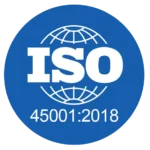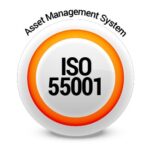What Is ISO 14001?
Environmental Management System

ISO 14001:2015, the Environmental Management System (EMS) standard, provides a globally recognized framework for organizations to manage their environmental impact. It offers a systematic approach to identify and control activities that affect the environment, including natural resources, waste management, and energy consumption. This voluntary standard applies to organizations of all sizes and sectors, helping them meet customer and stakeholder expectations. By implementing ISO 14001:2015, organizations can develop a robust system to minimize or eliminate environmental impacts. As part of the ISO family, this standard is recognized worldwide, and accredited certification bodies issue certificates accepted globally.
The benefits of ISO 14001:2015
- Improved overall performance and compliance
- Increased efficiency and cost savings
- Consistent management of environmental obligations
- Enhanced organizational reputation and image
- Effective resource utilization
- Meets requirements of Higg Index, Steps, and other "go green" programs
- Reduced costs associated with emissions, discharges, waste handling, transportation, and disposal
- Preferred vendor status for government organizations and retail stores
- Globally recognized and accepted standard
- Attracts new customers and retains existing ones
- Acceptable for international organizations
- Exempts from environmental audits (waiver)
Implementing ISO 14001:2015 leads to improved environmental performance, cost savings, and a enhanced reputation, making it an attractive choice for organizations committed to sustainability.
ISO 14001 certification
process:
outline of the ISO 14001 certification process:
- Gap Analysis: Experts conduct a thorough analysis of the client’s existing system, identifying gaps in documentation, implementation, employee awareness, and compliance.
- Implementation: The client works to address the identified gaps, with support from the technical team, to meet the ISO 14001 standard requirements.
- Audit Preparation: The client prepares for the certification audit, with assistance from the technical team.
- Initial Audit (Stage 1 and 2): The certification body conducts a two-stage audit to assess the client’s environmental management system.
- Certification: If successful, the certification body issues an ISO 14001 certificate valid for one year.
- Surveillance Audits: The certification body conducts annual surveillance audits for the next two years to ensure continued compliance.
- Re-audit (Recertification): After three years, a full re-audit is conducted to renew the certification cycle.











